季刊 戦争責任研究
『季刊 戦争責任研究』総目次 創刊号~第91号<作業中>http://japanwarresp.g1.xrea.com/center/somokuji.htm
| 号 | 発行年月日 | 特集 | 備考 |
| 創刊号 | (1993年秋季号) | 「従軍慰安婦」 問題を検証する】 | |
止
季刊 戦争責任研究
『季刊 戦争責任研究』総目次 創刊号~第91号<作業中>http://japanwarresp.g1.xrea.com/center/somokuji.htm
| 号 | 発行年月日 | 特集 | 備考 |
| 創刊号 | (1993年秋季号) | 「従軍慰安婦」 問題を検証する】 | |
止
広島・長崎と戦争責任─原水爆禁止運動以前の動向(宇吹暁)(『季刊戦争責任研究』第74号、日本の戦争責任センター、20111215)所収
はじめに
広島と長崎で被爆した人々の中には多くの外国人が含まれている。当時、アメリカ軍人をはじめイギリス・オーストラリア・オランダなどの将兵が捕虜として収容されていた。さらに、数千人に及ぶ外国人非戦闘員が居住していたことも、見逃しえない事実である。両都市およびその周辺地域には、日本の植民地支配下にあって「日本国臣民」とされていた朝鮮人が相当数生活していた。広島には、多数のアメリカ生まれの日系アメリカ人、ドイツ・ロシア・東南アジア諸国・中国・モンゴルなどの市民・聖職者・留学生が居住しており、長崎でも、外国籍の宣教師や修道女をはじめ多くの中国人が生活していたのである。これらの人々の多くは、被爆後祖国へ帰国した。また、被爆者の中には、戦後、アメリカ・カナダ・オーストラリア・ブラジル・アルゼンチン・ペルーなどの国々に移住した人々もあった(『広島・長崎の原爆災害』〔岩波書店、一九七九年〕)。原爆被害者の問題が、もともと日本の国内問題にとどまらないものであることは、こうした人々の存在を考えれば明らかである。
広島・長崎両市には、国立の原爆死没者追悼平和祈念館が開設されている。第二次世界大戦による死没者の追悼施設で「国立」の性格を持つ施設は、この外には東京都千代田区の「千鳥ケ淵戦没者墓苑」があるのみある。広島の「原爆ドーム」は、一九九六年一二月にユネスコの世界遺産リストに登録された。海外には、「アウシュビッツ・ビルケナウ ナチスドイツの強制収容所」や冷戦時代に米国が核実験を行ったマーシャル諸島の「ビキニ環礁」など、戦争に関連する世界遺産が存在する。しかし、アジアでは、第二次世界大戦以降の戦争・平和に関連した世界遺産は、「原爆ドーム」以外に存在しない。このような広島・長崎の原爆被害の在りようは、原爆被害が、日本やアジアの戦争被害の中で、特別な役割を担ってきた結果であるとともに、今後も担い続けることを期待されている証であろう。
これまで、広島・長崎の被害は、しばしば、「真珠湾攻撃」・「天皇」・「終戦」・「国際法」・「アメリカ大統領」・「国家補償」・「加害責任」など国家レベルのキーワードと対の形で論じられてきた。「真珠湾攻撃とヒロシマ」はその一例である。これらの論議は、現在なお進行中である。
被爆から六〇余年が経過し、広島・長崎の体験の歴史化が急速に進行している。この体験の歴史的意味を明らかにするためには、広島・長崎の被害に関連して展開した戦争責任に関する論議や動向を踏まえることが必要であろう。本稿の目的は、その前提作業として、そうした論議や動向を跡付けることである。広島・長崎の被害は、ビキニ水爆事件を契機として国内外でクローズアップされる。この被害をめぐる戦争責任論議の担い手は多様化し、その内容も深化する。ここで取り上げることができるのは、被爆直後からビキニ水爆事件までの期間であるが、その後の論議の論点の多くは、この時期に姿を現している。
一、 被爆直後の原爆批判キャンペーン
日本の戦争指導者は、広島の原爆被爆直後、国民向けには、これまでの防空対策を徹底すれば防御可能という態度をとった。しかし、その一方では、この爆弾の非人道性を最大限強調した。一九四五年八月一〇日、日本政府は、アメリカにその使用の中止を求める抗議文を渡した。抗議の根拠は、新型爆弾は毒ガス以上の残虐性をもつものであり、その使用は国際法違反(「原爆使用=国際法違反」説)であるからというものであった。また、一五日に国民に発表された「終戦紹書」も、原爆を「残虐ナル爆弾」と表現し、「頻ニ無辜ヲ殺傷シ惨害ノ及フ所真ニ測ルヘカラサルニ至ル」と、その残虐さを指摘するが、使用責任を取り上げてはいない。ただ、注目されるのは、この指摘の後ろに、戦争継続が、「我カ民族ノ滅亡ヲ招来スルノミナラス延テ人類ノ文明ヲモ破却」するから、ポツダム宣言を受諾するとの文言が続いている点である。
九月四日の衆議院で、高橋守平が決議案(皇軍将兵並国民勤労戦士に対する感謝敬弔に関する件)の趣旨弁明を行うが、彼は、その中で、原子爆弾のもたらした被害を敗戦の原因の一つに挙げ、「是れ以上の戦は日本民族の破滅であり、世界文明の破壞との大慈愛から、戦争終結の大詔を渙発せられた」と述べている。ニューヨーク・タイムズのロバート・トランブル記者は、九月五日付の同紙で、高橋の発言を取り上げ、つぎのように報じた。
高橋守平代議士は、議会において、戦死者に弔意を表し、原爆が早期終戦の主要な原因であると簡単に述べた。この反応は、ここではよく出会うもので、日本にとって、それが、将来面子を保つことに役立つとしばしば語られた
これらは、終戦詔書の原爆への言及が、原爆使用を終戦の理由(「原爆使用=終戦招来」)としたものと理解されていることを示している。
八月下旬、広島では、原爆被爆者や爆心地域での復興作業従事者の間に、脱毛・発熱・下痢などの諸症状や血液異常が出現した。この事実は、マスコミにより七〇年生物不毛説(広島の廃墟には、今後七〇年間、殺人性の放射能が残るという説)とともに伝えられ、国民の間に原爆の底知れぬ恐怖を流布した。また、同盟通信が、こうした状況を海外に伝えた。戦争が終わったにも関わらず、原爆放射線の持続的影響が被爆地に残っているという事実は、被災地の住民のみならず、国内外に大きな波紋を投げかけた。
九月一三日、重光葵外相は、スウェーデン・スイス・ポルトガルの公使に対し,アメリカにおける最近の日本の捕虜虐待批判に対抗して、原爆問題を利用する必要があると述べ、同盟通信が政府の原爆被害報告、広島(九月三日)・長崎(四日)への勅使派遣、日々増加している死者の数などについて詳細に報道していることを伝え、それに対する海外の反応の報告を求めている(『MAGIC SUMMARY』No.1269 15 September 1945)。戦後の国際社会に向けた日本政府による原爆被害情報発信の背景には、このような意図があったのである。
八月三〇日、連合国従軍記者団第一陣として厚木に到着したニューヨーク・タイムズ記者クルック・ホーンは、日本人記者団の質問に対して、「原子爆弾をアメリカがどうして使ったというのかね。それなら日本は真珠湾攻撃をどうしてやったか!」と問い返したという(『朝日新聞』八月三一日付)。東久邇宮新首相は、アメリカ人記者の質問書に対する返書の中で、「米国民よ、どうか真珠湾を忘れて下さらないか.われわれ日本人も原子爆弾による惨害を忘れよう」と述べている(『朝日新聞』九月一六日付)。この二つは、真珠湾攻撃と原爆攻撃が対置された早期の事例である。
八月下旬から、日本のマスコミに、原爆使用責任を問う論調が現れた。八月二二日の『読売報知』のコラム「陣影」は,「今回の戦に於て真に勝利者としての誇りを満足に味ひ得る国が果して何所にあらうか(中略)第一彼らの勝利は残虐なる原子爆弾などの非人道的手段によって得たものである」とのべ、同月月二八日の同紙は、石原莞爾のつぎのような談話を掲載した。
原爆と中小都市焼爆で日本本土を荒廃し、数百万人の非戦斗員を殺傷せしめたのであるから,今後日本が恭順の意を表して男らしく屈伏したからには現物賠償のどうのこうのをと金持国にも似合はぬケチなことを言はず、反対に日本再建の資金位出したらどうか.日本の宗教界も米国のとった原子爆弾に真正面から人道無視の刻印を捺して執拗に抗議すべきである。
また、九月一五日付の『朝日新聞』は、「戦後復興の諸施策如何」との問に対する鳩山一郎の回答を掲載した。そこでは、「極力米人をして罹災地の惨状を視察せしめ、彼ら自身、自らの行為に対する報償の念と復興の責任とを自覚せしむること」と述べられていた。GHQは、九月一八日には、『朝日新聞』の四八時間発行停止処分を行なったが、その理由の一つには、原爆投下責任を基礎にアメリカによる日本の復興責任を論じた鳩山一郎の談話を掲載したことをあげていた
二、国会での原爆論議
九月上旬来日したGHQは、日本で実施されていた原爆被害調査を厳重な管理下に置くとともに、八月一九日には、プレス・コードを指令した。こうした措置は、原爆被害を戦争責任回避に利用しようとする意図を挫くものではあった。これ以後、原爆使用を追及する国内でのさまざまな論調は姿を消す。しかし、これで原爆被害への言及が消えたわけではない。国会における論議だけでも、そのことが確認できる。復興に関連した論議の中で、広島・長崎両市の被害がしばしば取り上げられた。また、原爆投下を批判するさまざまな発言も存在した。
世耕耕一は一九四九年一一月二四日(「衆議院予算委員会」)、「原子爆弾を使用して戰争するということは、これは非人道的だ、かように私は考えております」と発言した。
堀眞琴〈労農党〉は、一九五一年一一月一七日(「平和条約及び日米安全保障條約特別委員会」)、参議院での平和条約と日米安全保障條約の討論の中で、反対理由の一つに「無差別爆撃」や「原子爆弾」により生じた「連合国が日本に持つ財産」の補償をしなければならなくなることを挙げている。菊川孝夫(社会党の第二控室)が、翌一八日(「参議院本会議」)、連合国財産補償法案に反対した理由も、堀と同じ内容であった。
清瀬一郎(参考人)は、一九五一年一二月一四日(参議院法務委員会)で、「今までの平和条約というものは、戦争犯罪人はお互いに大赦しよう」というものであるのにかかわらず、「今回の平和条約第一一条(「極東国際軍事裁判所並びに国内外の他の連合国戦争犯罪法廷の裁判の受諾」の記述を含む)に疑問を呈し、「例えば東京の無差別爆撃、これは犯罪ですわね。広島の原子爆弾投下、これも当時では犯罪です」と述べている。
以上は、原爆投下に批判的な意見であるが、原爆被害へ言及は、この外にも見受けられる。広島県出身の参議院議員山下義信は、一九四九年一二月一九日(参議院厚生委員会)に、原爆が「終戦の端緒」、「有名な世界都市となった」「機縁」と発言している。また、八嶋三郎(政府委員)は、一九五一年二月二〇日(「参議院建設委員会」)の答弁の中で、「御承知の通りに広島、長崎という都市は原爆によりまして大きな被害をこうむった、これによりまして日本に平和をもたらし、世界の平和というものを招来するとても大きな起因になったということは言えると思うのであります」と述べている。これらから、終戦詔書に端を発する「原爆使用=終戦招来」説が、占領期の原爆被害者援護や広島・長崎両市の復興支援の議論のなかで、生き続けていたことを知ることができる。
三、キリスト者
一九四五年一一月二三日、長崎の被爆者であり、キリスト者である永井隆は、「天主公浦上信徒代表」として読み上げた「原子爆弾死者合同葬弔辞」の中で、浦上への原爆被害を神の摂理とした(高橋真司『長崎にあって哲学する 核時代の死と生』(北樹出版、一九九四年七月)。四九年一月、永井の著作『長崎の鐘』が日比谷出版社から出版された。永井は、同書の序文で、「この[日本人の]無差別な殺傷行為を止め、戦争を終結させるために、アメリカと全世界とが原子爆弾を使用せざるを得なかった所以である。かくすることにより、彼等は日本およびその他の国々における無数の人命を救うことができたのである」と述べ、アメリカの原爆使用の正当性を主張している。
東洋工業株式会社(現:マツダ)教育主任中尾一真(三九才)は、広島市郊外の同社工場で被爆した経験の持ち主である。彼は、一九四六年八月六日、中央教会の焼け跡で開催された信徒大会で一同を代表し、「我等は無力にして、戦争とその惨禍の防止に対し、為すなかりしことを神と人との前に衷心よりざんげする」との宣言を述べた(日本基督教青年会同盟『天よりの大いなる声』〔東京トリビューン社、一九四九年〕142~143頁)。
広島のメソジスト教会の牧師である谷本清は、一九四七年の平和祭を前にした毎日新聞記者の取材に対し、「原爆の批判はわれわれの役目ではない」、「それはわれわれ以外の民族によってなされるべきこと」と語っている(今村得之・大森実『ヒロシマの緑の芽』〔世界文学社、一九四九年〕)。
ここに紹介した三人のキリスト者のうち、永井と中尾は、原爆被害の責任を自らの問題としてとらえている。中尾は、広島YMCAが市内一一校の六年生の学童一四〇〇名を招待して開催したクリスマス映画鑑賞会で次のように発言している(『天よりの大いなる声』48~49頁)。。
おぢさんたちは 世界中のおとなになり代って みなさんにおわびを申します おとなのみにくい心が戦争をひきおこし みなさんをこんなひどい目にあわせてしまいました
どんなに沢山 みなさんのお友達が死んだでしょう 広島で、長崎で 南京で マニラで 今日は戦災児育成所からも見えていますが どんなに沢山罪のない子供が辛い思いをしてるでしょう
世界中で 本当に戦争責任のないのは みなさんだけ、子供だけ みなさんこそ戦争の被害者 おとなはみんな大馬鹿者
彼が一九四六年八月の信徒大会で述べた戦争への反省の言葉が、改めて小学生に向けて発せられたと理解できる。
谷本は、前の二人と異なり、原爆批判の必要性は認めるが、日本人の役割ではないとの立場に立っている。谷本の特異な発言の背景には、彼の経歴(アメリカ・アトランタにあるエモリー大学神学院の一九四〇年卒業生)とジョン・ハーシー(一九四六年五月取材)の「ヒロシマ」レポートの登場人物であったことが考えられる。これらの経歴により海外の情報に接することができた彼には、海外の人々による広範な原爆批判に期待を寄せることができたのであろう。
四、天皇・靖国
一九四七年八月六日、広島市で今日の平和記念式典につながる初の式典が開催された。当時、平和祭と呼ばれたこの行事は、国際的に大きな反響を呼ぶが、ここで注目されるのは、主催者が、昭和天皇のこの式典への参列を要望していることである。式典挙行のための各界代表者の会合(五月に開催)で、式典に天皇の行幸を願い出ることが満場一致で申し合わされ、これを受けて県知事が宮内府に交渉する。平和祭参列は実現しなかったが、同年一二月七日、被爆地への行幸が実現した。爆心地の市民広場で開催された市民奉迎式典には五万人が参加した。この日は、日米開戦日一二月八日の前日にあたり、海外メディアの一八人が取材した(小野勝『天皇と廣島』〔文化社、一九四九年〕)。ニューヨーク・タイムズは、八日付の同紙一面に “Hirohito Rules Out New ‘Pearl Harbor’” の見出しで広島発のUP電を掲載している。前出の谷本清は、天皇行幸の前後に、記者の取材に対し、「天皇制はキリストの理想に両立し得る」とし、その根拠として「敗戦後空白となった日本人の心に愛と信をさずけるのがキリストの理想ならば、纏まりを失った日本人の横の結びとなるのが天皇である」と述べている(今村得之・大森実『ヒロシマの緑の芽』〔世界文学社、一九四九年〕)。なお、天皇は、一九四九年五月二八日には、長崎を訪れた。この時、数万の市民が、浦上三菱球場の奉迎場を埋めており(長崎市役所『長崎市史年表』一九八一年)広島同様多くの市民の歓迎を受けた。
天皇行幸では、両被爆地の多くの市民が歓迎した。しかし、天皇への好意的なものばかりではなかった。国会議事録からでもつぎのような事例を見出すことができる。
その一つは、京都大学でのことである。同大学の学生は、天皇の来学(一九五一年一一月一二日)の二日前、大学当局に天皇への「公開質問状」を提出していた。渡部義通は、一一月二一日(「衆議院文部委員会」)、五項目からなる質問状の内容を紹介し、政府の見解をただした。五番目の項目は、同年の夏に学外で開催した原爆展を学内で開催しようとしたことに関連したもので、その内容はつぎのとおりである。
五、広島、長崎の原爆の悲惨はあなたも終戦の詔書で強調されていました。そのことは私たちはまったく同意見で、それを世界に徹底させるために原爆展を制作しましたが、その開催があなたの来学を理由として妨害されています。あなたはそれを希望されるでしょうか。また私たちは特にあなたにそれを見ていただきたいと思いますが、見ていただけるでしょうか。
また、道徳教育をめぐる論議の中でのことであるが、一九五一年一一月二六日(参議院文部委員会)、矢川徳光(参考人)が、少年少女の原爆体験記『原爆の子』を取り上げ、その中で「片岡修という当時中学校の一少年であつた人が、やはり天皇の問題について疑問を提出しておる」ことを紹介している。その内容は、当時の中学生が、原爆に被爆して死にゆく級友に慰めとして「軍人勅諭」を暗誦し、「天皇陛下万歳」を唱えた状況を伝える箇所であった(長田新編『原爆の子 広島の少年少女のうったえ』〔岩波書店、一九五一年〕二八六頁)。
一九五一年、日本政府が講和条約発効を見越し旧軍人の援護を公式に取り上げると、広島で原爆犠牲者遺族の援護を求める運動が始まった。国内での組織的運動としては、これが初めてのものであった。同年一一月、広島市長は、政府と国会に「原爆犠牲者遺族援護に関する請願書」を提出した。その内容は、被爆「当時広島市は全市要塞化し」「老幼男女の区別なく」「戦場にあった旧軍人と同じ立場に置かれていた」ことを理由に、原爆で死亡した義勇隊員と動員学徒の遺族に対する旧軍人同様の国家補償を求めるとともに、これらの犠牲者の霊の靖国神社への合祀を要望するものであった(参議院社会労働委員会調査室『広島市における原爆障害者対策に関する調査概要』〔一九五六年〕)。
これを皮切りに、広島市長・市議会議長、県知事・県議会議長、国会議員を巻き込む形で、政府や国会に対する請願・陳情が展開された。これらは、戦傷病者戦没者遺族等援護法案の国会上程前の行動であったが、同法案が上程された国会の公聴会(一九五二年三月二六日 衆議院厚生委員会)には、広島原爆犠牲者遺家族援護連盟委員長任都栗司が、広島において、二万一一〇二人の国民義勇隊・動員学徒・徴用工・女子挺身隊員が軍の強力な要請にもとづいて出動中原爆の犠牲になったことを述べ、その遺族の援護を訴えた。
五、ABCC(原子爆弾傷害研究所)
一九四八年一二月二三日夜、広島市内の開業医である原田東岷のもとを急患が訪れた。白血病か悪性貧血か診断がつかなかった原田は、翌日、アメリカの研究機関ABCCを訪れ、白血病との診断結果を得た。原田医師が、広島の原爆被爆者の中に初めて白血病患者を発見した瞬間であった。診断を下したアメリカ人の軍医中尉は原田に「私はこの病気を待っていたのです」と語ったが、ABCCにとっても初めての白血病患者であったことがわかる。原田の診療への協力は、ABCCの他の医師からも得られ、原田とABCCとの良好な関係が続くことになる(原田東岷『ヒロシマの外科医の回想‐ヒロシマからベトナムへ』〔未来社、一九七七年〕)。一九四九年五月、参議院厚生委員会の調査メンバーが日赤広島支部の「指導者階級の座談会を開き、原爆による妊娠並びに出産率、或いは放射能の影響、又人口問題、社会事業団体等の状況の調査報告を受け」た。その際、ABCCの日系二世のドクターがわざわざ臨席し、「原爆の影響の調査研究のための米国の大規模な方策の一部」を紹介している(「参議院厚生委員会」一九四九年五月一〇日)。ABCCが、本格的な研究を開始するに当たり、広島の医療関係者や機関と良好な関係を築こうとしている様子をうかがわせる。
しかし、広島には、ABCCに対する強い不満が存在していた。一九五二年八月四日に長崎市内で開催された広島・長崎両原爆都市建設特別委員会の席上、ABCCに対する批判がなされ、広島の特別委員会委員長任都栗司は「アメリカはケロイド症状に悩む原子病患者をネズミかモルモットぐらいにしか考えていない、単なる研究資料として取扱っているが治療機関を設置すべきでアメリカはその責任がある」と述べている。
また、「アメリカは原爆投下のつぐないとして両市の復興を促進すべき責任がある」との意見が強く打出された。 中村長崎特別委員長も、つぎのように語った。
惨殺行為が国際法で禁止されていたにかかわらず、アメリカは一しゅんにして幾万の非戦闘員の生命を奪ったのだから、このつぐないは当然負うべきである、われわれはこのむねの申入れを広島とともに講和締結前、米極東軍司令部の民事部にたいし行ったが、講和前であり公にされなかった、原爆による損害の請求をアメリカの世論に訴えるのはわれわれの権利である(『長崎日日新聞』一九五二年八月六日付)。
六、原爆被害者の会とABCC
一九五二年八月一〇日、原爆ドームの傍らで土産物店を開いていた吉川清(マスコミから「原爆一号」と呼ばれていた)や峠三吉・山代巴・川手健・野村英一らにより、広島市内で「原爆被害者の会」が組織された。結成時の会員は数十人であったが、その後の被爆者運動につながる様々な活動を展開する。八月二四日に開いた第一回幹事会で、当面の仕事として原爆症患者の治療問題の交渉と資金募集を決定した。一〇月六日、ABCCのテーラー所長と面会、「ABCCに無料治療機関を設置する様要求する」決議を申し入れたが、拒否された。理由は、ABCCの目的がちがうとのことであった。一〇月二〇日に開いた第二回幹事会で「軍事目的が濃厚と思われ、被害者にとって何の利益にもならないABCCに対しては今後一切協力しない態度を決定」した。(川手健「半年の足跡」(『原爆に生きて』))。なお、一〇月六日のABCC訪問には、佐久間澄ら広島大学物理教室のメンバーや雑誌『改造』(「原爆特集号」一一月一五日発行)のルポルタージュ執筆のため広島を訪れていた武谷三男も同席していた(M.T「ABCC の内幕」(『改造』増刊号、一九五二年一一月)。
一九五三年三月、大阪の弁護士岡本尚一が原爆被害者の会を訪れた。用件は、自分の計画している原爆損害賠償請求訴訟の提訴の原告者として運動を起こすことの申し入れであった。会では,三月二九日の第五回幹事会で,次のような決議を行い、その旨を広島弁護士会に伝え協力を依頼した。
1.我々原爆被害者は今回の提訴には全面的に賛成であり,条件がととのえば何時でも原告者として,アメリカ政府,並びに原爆投下の決定に参与した米国人を告発する用意がある。
2.我々が提訴についてかかる態度をとったのは,原爆が人道上許しがたい虐殺の道具であり,これが広島に投下され、三〇万の人々を殺し,一〇数万の被害者を出した事実に対し,今もって憤怒をいやす何らの理由も見出さないからである。この提訴が原爆禁止の世論を更にたかめ,再びかかる悲惨事のくりかえされない様,世界の平和運動の一層強大になる事を願って止まない。
3.我々は個人としてではなく,原爆被害者の唯一の自主的団体である原爆被害者の会として提訴をおこす。その他の具体的な方法については,広島弁護士会と相談の上決定したい(「原爆被害者の会機関紙「芽生え」№.1 一九五三年四月五日)。
七、極東軍事裁判の余波
講和条約発効後、極東軍事裁判の関係者二人による発言や行動が広島・長崎に大きな波紋を生んだ。その一人は、一九五二年一二月に広島を訪れた元極東軍事裁判判事R・B・パールの発言である。彼は、同年の八月に除幕した広島平和記念都市建設碑の「安らかに眠って下さい 過ちは繰返しませぬから」との碑文の「過ち」に、異を唱えたが、これを契機に、市民の間に碑文への賛否両論が沸き起こった(石田宜子「過ちは繰返しませんから─碑文論争の歩み」〔『広島市公文書館紀要』二〇号、一九九七年〕)
もう一人は大阪の弁護士岡本尚一の原爆訴訟の構想と実現に向けた行動である。彼は、極東国際軍事裁判に主任弁護人として参加する中で、「講和条約が発効した後においては、尠くとも広島及び長崎に対する原爆の投下についてはこの責任を民事不法行為の面において採りあげて原爆投下の決定に参与した指導者等及び国家に対して不法行為の管轄裁判所に対し提訴致し度いと念願し」ており、「訴訟の遂行が可能か否かに関して研究すべき主要法律問題について一応卑見を原爆民訴或問と題して簡単な問答体」にまとめ、これを、広島・長崎在住の弁護士六四人および弁護士・学者・宗教家など六四人に送付し、意見と協力を求めた(昭和二八年一月一四日付広島弁護士会長宛岡本尚一書簡)。
広島・長崎両弁護士会はともにこれをとりあげ特別委員会を設けて検討したが,結局この様に大きな問題は日本弁護士連合会で取扱うのが妥当との結論となり,問題は日弁連に移された。日弁連内に設けられた「原爆被害者救済に関する国際的措置の取扱調査委員会」は,一二月一四日,日弁連会長に次のような要旨の意見書を提出した。
1.日弁連はこの問題についてどの様な措置をとるのが妥当かを考えるため相当数の委員を選んで法律的・実際的な調査研究を行うべきだと考える。
2.日弁連は原爆の惨害は人類最大の恐怖であることを天下に伝え,世界の宗教家・法律家・人権擁護協会等によびかけ原爆使用禁止の国際的立法化を期することに一歩を進めるべきだと考える。
一二月一九日の日弁連理事会は,この報告にもとづいて第二次調査委員会の設置を決定した(「芽生え」No.2 一九五四年一月一八日)。
一九五四年一月八日,岡本尚一の提案によりこの訴訟を実現させるための実行団体である原爆損害求償同盟が結成された。法理論の広範な検討が着手される前にこのように急速に訴訟の準備に着手したのは,この訴訟の時効が同年四月二八日で切れることが判明したからである。同盟結成の連絡を受けた原爆被害者の会は、一月六日の幹事会で,同盟役員として温品道義・竹内武の二人を選出,八日東京の学士会館で開かれた結成総会には竹内が出席した。
原爆被害者の会が、岡本の提案に直ちに支持を表明したのにくらべ,広島の弁護士会の対応は慎重であった。その原因は、主として日米親善の障害とならないか、そのような裁判が理論的に成立するか、の二点にあったといわれている(松井康浩『戦争と国際法 原爆裁判からラッセル法廷へ』〔三省堂、一九六八年〕)。
東京の弁護士松井康浩(岡本の原爆訴訟構想に共鳴して参加し、病のため一九五六年九月の公判を最後に法廷から姿を消した岡本に代わり訴訟を引き継いだ)は、のちに、弁護士会などの対応について、岡本弁護士を失望させたことを明らかにするとともに、彼自身の意見を述べている。その内容は、つぎのようなものである。
太平洋戦争遂行過程での日本軍国主義によるアジア諸国民に対する深刻な打撃、南京大虐殺その他加害の深刻さが、日本国民のアメリカ政府に対する損害請求という攻撃的方法の発想を抑止していたのかもしれない(松井康浩『原爆裁判 核兵器廃絶と被爆者援護の法理』〔新日本出版社、一九八六年八月〕二〇頁)。
おわりに
ここまで、広島・長崎の原爆被害に関連して展開された戦争責任の論議や動向を紹介したが、最後に、これらの論議や動向のいくつかについて、ビキニ水爆事件以降の展開を概観しておきたい。
その第一は、原爆被害の投下責任を損害賠償請求という形で展開する主体の誕生である。岡本尚一が提唱した原爆被害損害賠償請求訴訟構想は、一九五五年四月に原爆被害者による東京地裁(原告二人)と大阪地裁(原告二人)への提訴として実現する。大阪地裁の裁判は、原告の意向により東京地裁に移送され一つの裁判となるが、その判決が一九六三年一二月に下された。その内容は、原告の請求を棄却するものであったが、「原爆投下は国際法違反」との司法判断を引き出した。この判決は、その後の日本の原水爆禁止運動や被爆者運動に大きな影響を与えることになる。
第二は、「原爆被害(アメリカ側からは〈被害〉ではなく〈使用〉)=終戦招来」説である。ビキニ水爆事件以後、目立たなくなっているが、今日まで、原爆被害者の援護や同情の根拠として引き継がれている。原爆投下を「やむをえない」(一九七五年一〇月三一日の天皇の発言)、「しょうがない」(二〇〇七年六月三〇日の久間章生防衛大臣の発言)とする見解は、この説を受けたものと考えられる。
第三は、復興責任についてである。一九四九年八月の広島平和都市建設法と長崎国際文化都市建設法の制定は、戦争責任との直接的な関連はないが、政府やGHQが、他の戦災との特異性を認めたことにより実現したものである。
第四は、真珠湾、マニラ、南京における日本軍の国際法違反行為や残虐行為との対比である。本文で紹介した長崎のキリスト者永井隆の『長崎の鐘』の後半には、「マニラの悲劇」(内容は日本軍が戦争中にフィリッピンでおこなった残虐行為の解説書で、この本の総ページ数の四〇%を占める)が付されているが、これは、一九四八年三月にGHQのウィロビーが,刊行許可の条件として提示したものである(モニカ・ブラウ『検閲 一九四五-一九四九―禁じられた原爆報道』〔時事通信社、一九八八年〕)。また、広島市の一九四八年の平和祭に出席したイギリス連邦軍司令官ロバートソンは、メッセージの中で「広島に下されたこの天罰は軍国主義を追及せる日本国民全体への応報の単なる一部」と述べている(「英連邦軍総司令官ロバートソン中将メッセージ」、『市勢要覧 昭和二三年版』〔広島市、一九四九年〕)。占領期にみられるこうした取り上げ方は、戦争展や平和博物館の展示には、単に懲罰的な視点からではない意図で引き継がれている。
第五は、動員学徒に関わる問題である。靖国神社合祀は、遺族の強い願いであった。また、生存した動員学徒の中にも、それを願う人々が存在する。一九五六年以降「動員学徒犠牲者の会」が県単位で生まれるが、これらの会が、靖国神社合祀の要求を受け継いでいることを、広島県動員学徒犠牲者の会などの出版物で確認することができる。
広島・長崎両県の会員には、動員学徒の生存者を中心に原水爆禁止運動や被爆者運動と深い関わりを持つものが多数存在する。会員の担い手は遺族から動員学徒の生存者に移り、その進展にともない活動内容が変化してきた。その中で注目されるのは、動員学徒の生存者が、各出身校の平和教育の担い手となっていることである(広島県動員学徒犠牲者の会『動員学徒誌 被爆五〇年記念』〔一九九五年〕)。
第六は、ABCCに関わる問題である。占領下にも広く存在していたABCCへの強い批判は、講和条約発効直後に一気に表面化した。一九五三年九月に原爆被害者の会が会員から抽出した七〇人を対象としたアンケートにABCCに関する項目がある。残っていた調査原票四一人分の結果は、つぎのようなものであった。
一、ABCCのやっていることをいいと思うか
いいと思う八、よくないと思う十四、どちらでもよい一一、わからない八、
二、ABCCはあった方がよい
よい四、ない方がよい一三、どちらでもよい一四、わからない八、(治療ならよい)二
三、アメリカに対する損害賠償請求
賛成三一、反対四、どちらでもよい一、不明五
ABCCの事業の評価と存在の可否に対する回答からは、会員のABCCへの拒否反応がそれほど強いものとは考えられない。これと比較して注目されるのは、アメリカに対する損害賠償請求に多くの会員が賛成していることである。この結果から、ABCCへの批判が、アメリカの原爆投下責任を追及する性格を持つことを知ることができる。ABCCは、一九七五年、アメリカの研究機関から日米共同の研究機関である放射線影響研究所に改組され現在に至っている。
止
文献:戦争責任・戦後補償<作成中>
720
| 発行 年月日 |
書名 | 編著者 | 発行所 |
| 1960 | |||
| 0210 | 戦争責任 | 竹内好・吉本隆明・村上一郎・竹内実・橋川文三 | 春秋社 |
| 1965 | |||
| 1212 | 南京作戦の真相 熊本第6師団戦記 | 下野一霍 | 東京情報社 |
| 1967 | |||
| 0320 | 三千人の生体実験 | 島村喬 | 原書房 |
| 1972 | |||
| 0720 | 中国の日本軍 | 本多勝一 | 創樹社 |
| 1973 | 「南京大虐殺」のまぼろし | 鈴木明 | 文芸春秋 |
| 1975 | |||
| 0815 | 天皇の戦争責任 | 井上清 | 現代評論社 |
| 1115 | 戦争責任論序説 | 大沼保昭 | 東京大学出版会 |
| 1977 | |||
| 0301 | 現代史におけるアジア-帝国主義と日本の戦争責任 | 荒井信一 | 青木書店 |
| 0815 | あるB・C級戦犯の戦後史-ほんとうの戦争責任とは何か | 富永正三 | 水曜社 |
| 1981 | |||
| 1010 | 新聞の犯した戦争責任 | 池田一之 | 経済往来社 |
| 1982 | |||
| 0325 | 中国の旅 | 本多勝一 | 朝日新聞社 |
| 0815 | 反核と戦争責任-「被害者」日本と「加害者」日本 | 岩松繁俊 | 三一書房 |
| 1231 | 決定版 南京大虐殺 | 洞富雄 | 現代史出版会(発売:徳間書店) |
| 1983 | |||
| 0815 | 日の丸は赤い泪に―第731部隊員告白記 | 越定男 | 教育資料出版会 |
| 1984 | |||
| 0801 | 証言・南京大虐殺 戦争とはなにか | 南京市文史史資料研究会、加々美光行・姫田光義訳 | 青木書店 |
| 1985 | |||
| 0530 | 東京裁判から戦後責任の思想へ | 大沼保昭 | 有信堂 |
| 0719 | 戦争責任 | 家永三郎 | 岩波書店 |
| 1986 | |||
| 0102 | 天皇の軍隊と南京事件―もうひとつの日中戦争史 | 吉田裕 | 青木書店 |
| 0305 | 南京大虐殺の証明 | 洞富雄 | 朝日新聞社 |
| 0315 | 反核と日本の戦争責任-1985・12・7シンポジウム記録集 | 反核100000人委員会 | |
| 0801 | 南京の日本軍―南京大虐殺とその拝啓 | 藤原彰 | 大月書店 |
| 0820 | 聞け!血涙の叫び 旧台湾出身日本兵秘録 | 基佐江里編著 | |
| 旧日本軍人軍属遺族救助基金会 支援委員会出版局 | |||
| 1987 | |||
| 0120 | 南京への道 | 本多勝一 | 朝日新聞社 |
| 0820 | 南京事件を考える | 洞富雄・藤原彰・本多勝一編 | 大月書店 |
| 1989 | |||
| 0415 | 民衆の戦争責任 | 高橋彦博 | 青木書店 |
| 0515 | 長崎市長への七三〇〇通の手紙-天皇の戦争責任をめぐって | 径書房編 | 径書房 |
| 0720 | 戦争責任を訴えるひとり旅-ロンドン・ベルリン・ニューヨーク | 富山妙子 | 岩波書店 |
| 1990 | |||
| 0415 | |||
| 0701 | 現代史における戦争責任-現代史シンポジウム | 藤原彰・荒井信一編 | 青木書店 |
| 1205 | 日系アメリカ人-強制収容から戦後補償へ | 岡部一明 | 岩波書店 |
| 1991 | |||
| 0715 | 日中戦争いまだ終らず―マレー「虐殺」の謎 | 中島みち | 文芸春秋 |
| 1225 | キリスト者の戦争責任と平和運動 | キリスト者平和の会編 | かもがわ出版 |
| 1992 | |||
| 0720 | 朝鮮植民地支配と戦後補償 | 戦後補償問題連絡委員会編 | 岩波書店 |
| 0725 | 戦後補償を考える-アジアの声第6集 | 国際フォーラム実行委員会編 | 東方出版 |
| 0921 | 南京大虐殺 日本人への告発 | 南京大虐殺の真相を明らかにする全国連絡会編 | 東方出版 |
| 1993 | |||
| 0601 | 憲法Bunko―平和・戦争責任・戦時補償 | 平和のための大阪の戦争展実行委員会;日本機関紙協会大阪府本部共編 | 日本機関紙出版センター |
| 0720 | 浄土真宗の戦争責任 | 菱木政晴 | 岩波書店 |
| 0728 | 戦争責任の受けとめかた-ドイツと日本 | 加藤周一 | アドバンテージサーバー |
| 1122 | 連合国捕虜虐待と戦争責任 | 油井大三郎・小菅信子 | 岩波ブックレットNo.321 |
| 1994 | |||
| 0310 | 戦後世代の戦争責任 | 加藤周一 | かもがわ出版 |
| 0531 | 泰緬鉄道と日本の戦争責任 捕虜とロームシャと朝鮮人と | G・マコーマック著・内海愛子編 | 明石書店 |
| 0730 | 日本の戦後補償 | 日本弁護士連合会編 | 明石書店 |
| 0815 | 宗教者の戦争責任懺悔・告白資料集 | 日本宗教者平和協議会 | 白石書店 |
| 0915 | ハンドブック戦後補償(増補版) | 内海愛子・越田綾・田中宏・飛田雄一(監修) | 梨の木舎 |
| 1225 | 戦争責任と戦後責任-祖父の罪を孫が償うのか | 望田幸男 | かもがわ出版 |
| **** | 南京大虐殺 | 徐志耕(秋子訳) | 外文出版社(中国・北京) |
| 1995 | |||
| 0315 | 50年目の戦争責任 | 破防法研究会 | 星雲社 |
| 0420 | もう待てない今こそ戦後補償を! | 高木健一 | 凱風社 |
| 0620 | キーワード・日本の戦争犯罪 | 小田部雄次・林博史・山田朗 | 雄山閣出版 |
| 0620 | 弁護士がみた戦後補償と人権 | 村山晃 | 部落問題研究所 |
| 0707 | 戦争と平和の事典-現代史を読むキーワード | 松井愈・林茂夫・梅林宏道・渡辺賢二・吉池俊子・綿引光友・伊藤田直史 | 高文研 |
| 0720 | 日本の中国侵略と毒ガス兵器 | 歩平著、山辺悠喜子・宮崎教四郎(監訳) | 明石書店 |
| 0815 | 在韓被爆者が語る被爆50年-求められる戦後補償 | 韓国の原爆被害者を救援する市民の会 | |
| 1215 | PEACE!PEACE!PEACE!わたしたちに戦争責任はないのか | 日本戦没学生記念会(わだつみ会)編 | 情況出版 |
| 1996 | |||
| 0310 | 戦争責任Vol.4-特集:50年目の責任 | アジアに対する日本の戦争責任を問う民衆法廷準備会編 | 樹花社 |
| 0328 | 日中戦争の悲劇―写真でつづる中国からの証言 | 馬振犢・陳仲丹・林慧敏(編著 )藤尾直正・藤尾玲子(訳)
|
柳原書店 |
| 0531 | 日本軍の細菌戦・毒ガス戦―日本の中国侵略と戦争犯罪 | 731部隊国際シンポジウム実行委員会編 | 明石書店 |
| 0801 | 在韓被爆者が語る被爆50年-求められる戦後補償<改訂版> | 韓国の原爆被害者を救援する市民の会 | |
| 0815 | 戦後世代の戦争責任 | 田口裕史 | 樹花舎(発行所)・星雲社(発売所) |
| 1115 | 教科書から消せない戦争の真実―歴史を歪める藤岡信勝氏らへの批判 | 家永三郎(監修)吉見義明・藤原彰・安井三吉・大日方純夫(著) | 教科書検定訴訟を支援する全国連絡会(発売:青木書店) |
| 1997 | |||
| 0725 | 現代歴史学と戦争責任 | 吉田裕 | 青木書店 |
| 0801 | 南京の日本軍―南京大虐殺とその背景 | 藤原彰 | 大月書店 |
| 1009 | 南京の真実 | ジョン・ラーベ著、エルヴィン・ヴィッケルト編、平野卿子訳 | 講談社 |
| 1998 | |||
| 0225 | 戦争責任-過去から未来へ | アジアに対する戦争責任を問う民衆法廷準備会 | 緑風出版 |
| 0315 | 季刊戦争責任研究№19 | 日本の戦争責任資料センター | |
| 0323 | 裁かれた戦争犯罪―イギリスの滞日戦犯裁判 | 林博史 | 岩波書店 |
| 0615 | 季刊戦争責任研究 №20 | 日本の戦争責任資料センター | |
| 0731 | 戦争責任と核廃絶 | 岩松繁俊 | 三一書房 |
| 1999 | |||
| 0515 | 戦前の「水豊」から「安野」の今へ 西松建設の戦争責任 | 中国人強制連行・西松建設裁判を支援する会 | |
| 0630 | 戦争責任と「われわれ」 「「歴史主体」論争」をめぐって | 安彦一恵・魚住洋一・中岡成文編 | ナカニシヤ出版 |
| 0731 | 731面積の系譜―細菌戦部隊と秘蔵のファイル | 太田昌克 | 日本評論社 |
| 0901 | 戦後補償とは何か | 朝日新聞戦後補償問題取材班 | 朝日文庫 |
| 1210 | 戦後責任論 | 高橋哲哉 | 講談社 |
| 2000 | |||
| 1105 | 天皇の戦争責任 | 加藤典洋・橋爪大三郎・竹田青嗣 | 径書房 |
| 2001 | |||
| 0220 | グローバリゼーションと戦争責任 | 金子勝 | 岩波書店 |
| 0805 | 日本の戦争責任をどう考えるか 歴史若いワークショップからの報告 | 船橋洋一編著 | 朝日新聞社 |
| 2004 | |||
| 0728 | 毒ガス戦と日本軍 | 吉見義明 | 岩波書店 |
| 2006 | |||
| 0710 | 検証戦争責任Ⅰ | 読売新聞戦争責任検証委員会編著 | 中央公論新社 |
| 1010 | 検証戦争責任Ⅱ | 読売新聞戦争責任検証委員会編著 | 中央公論新社 |
| 2006 | |||
| 0625 | シンガポール華僑虐殺―日本軍はシンガポールで何をしたのか | 林博史 | 高文研 |
| 2015 | |||
| 0901 | アメリカの戦争責任 戦後最大のタブーに挑む | 竹田恒泰 | PHP研究所 |
| 2019 | |||
| 0520 | 検証「戦後民主主義」 わたしたちはなぜ戦争責任問題を解決できないのか | 田中利幸 | 三一書房 |
止
『広島県の近代化遺産―広島県近代化遺産(建造物等)総合調査報告書』(広島県教育委員会、1998.3)
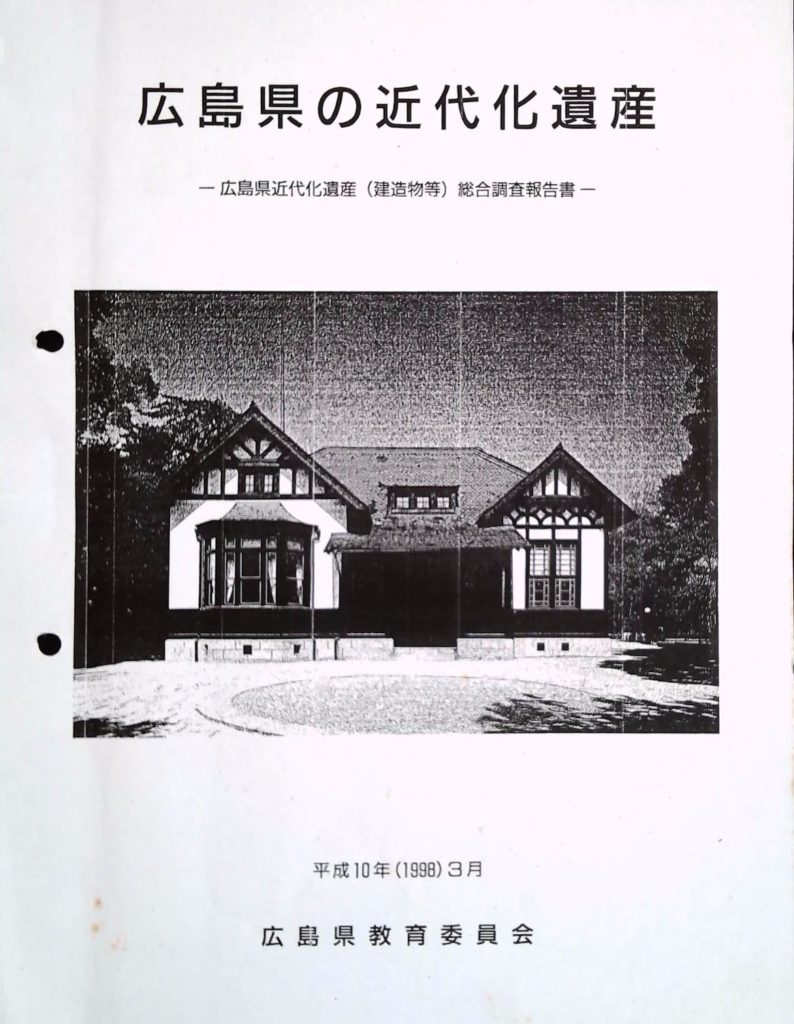 |
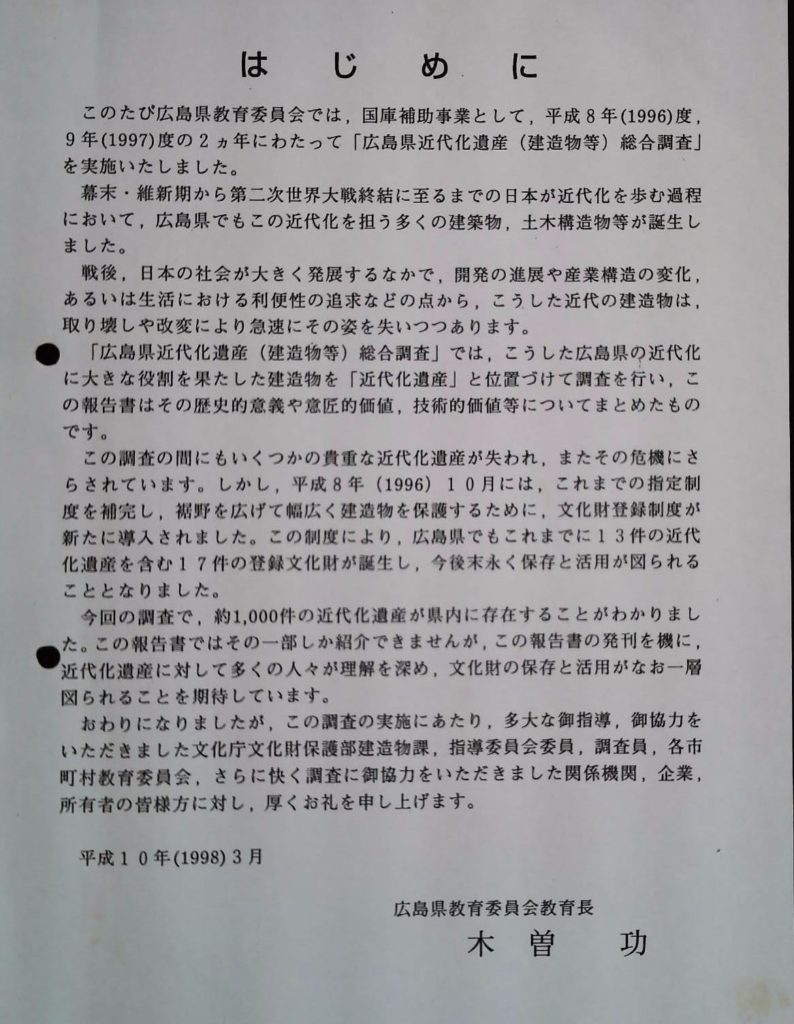 |
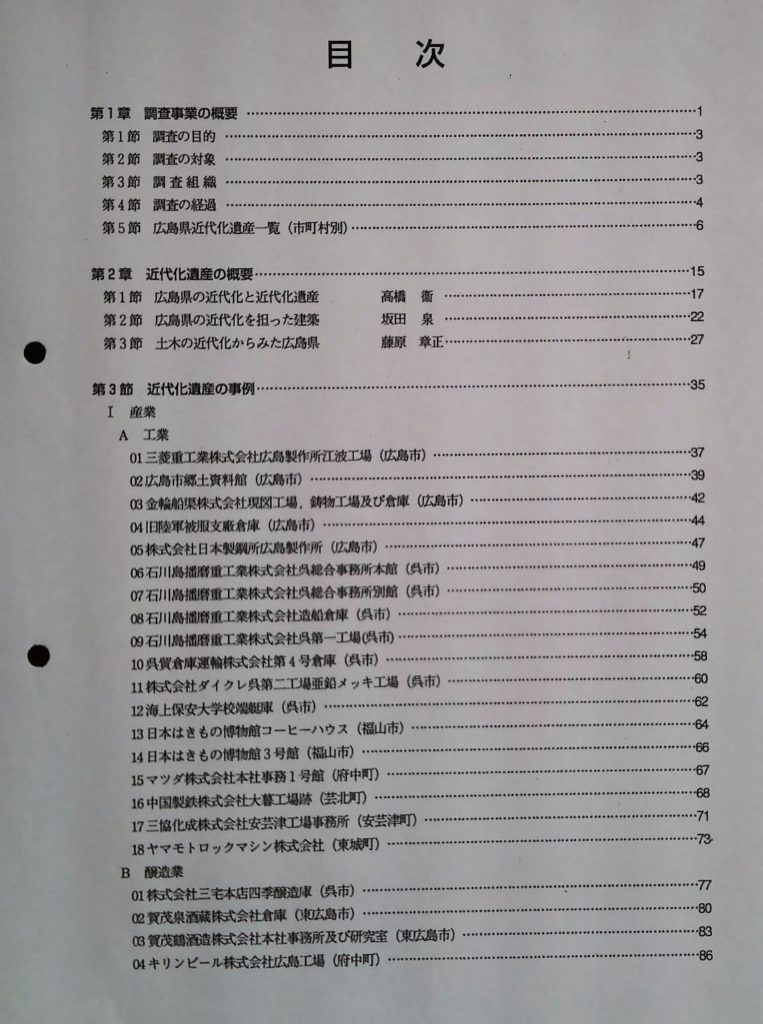 |
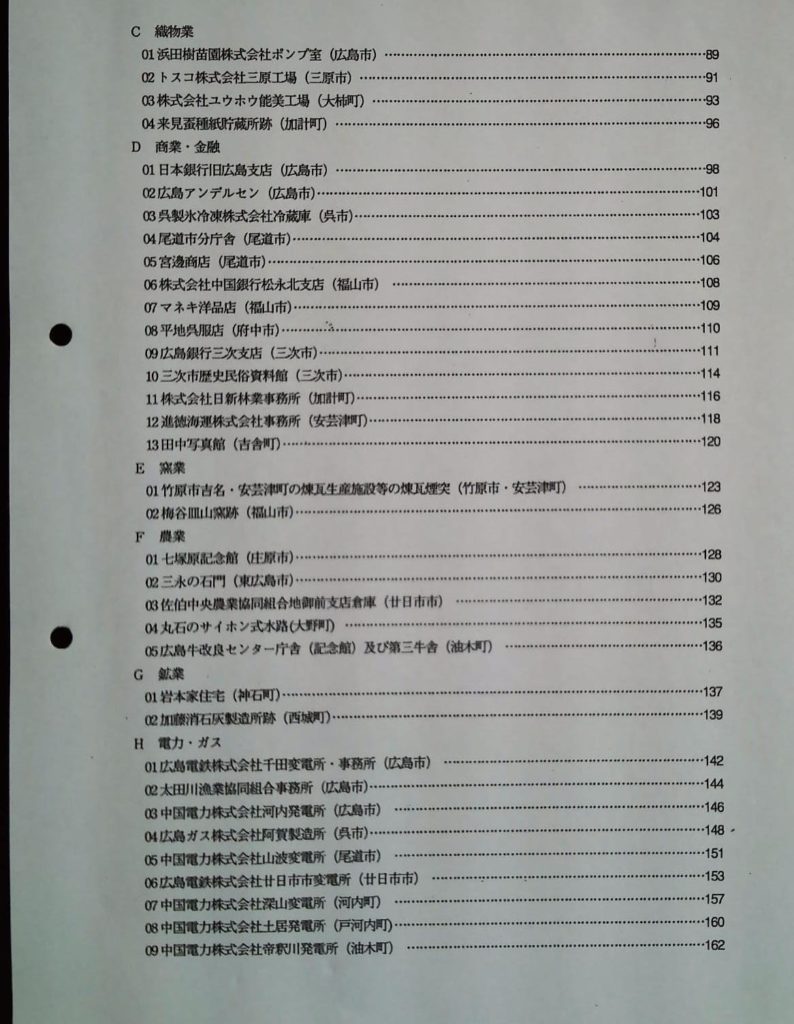 |
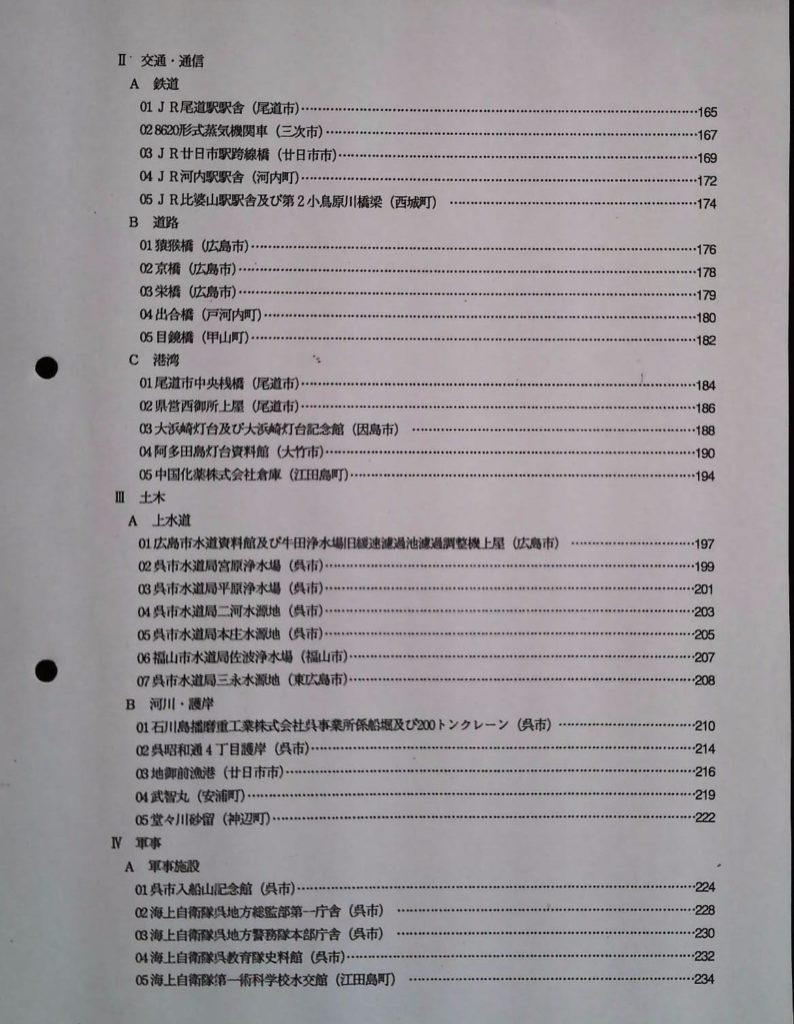 |
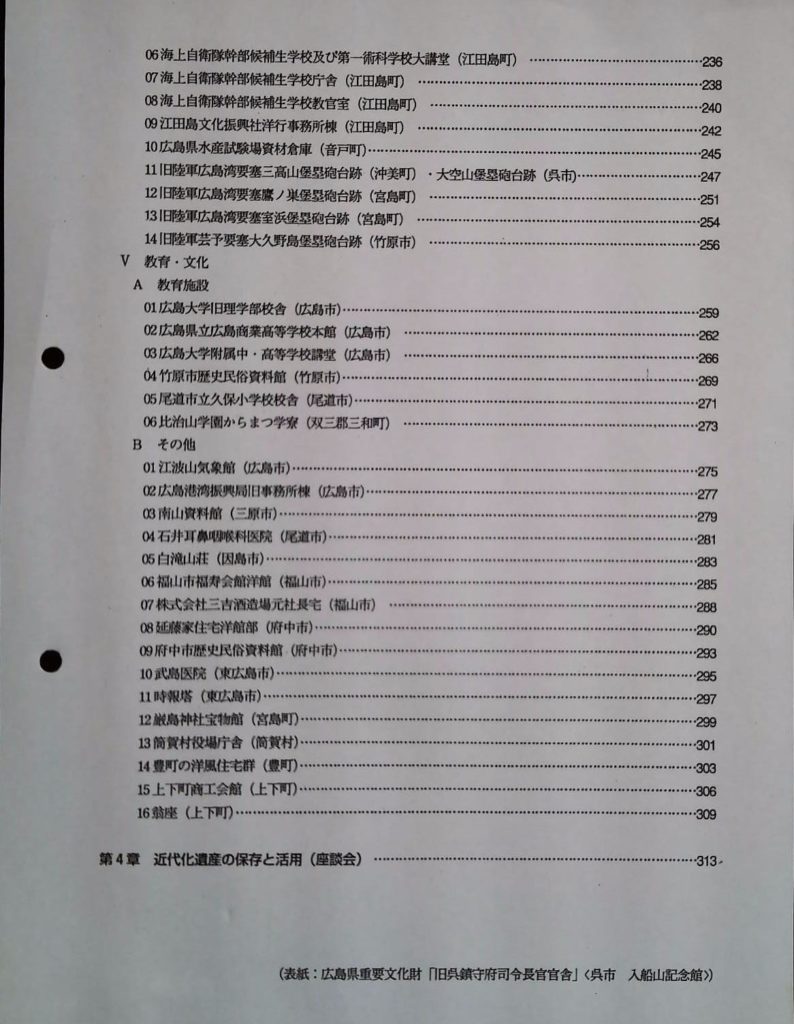 |
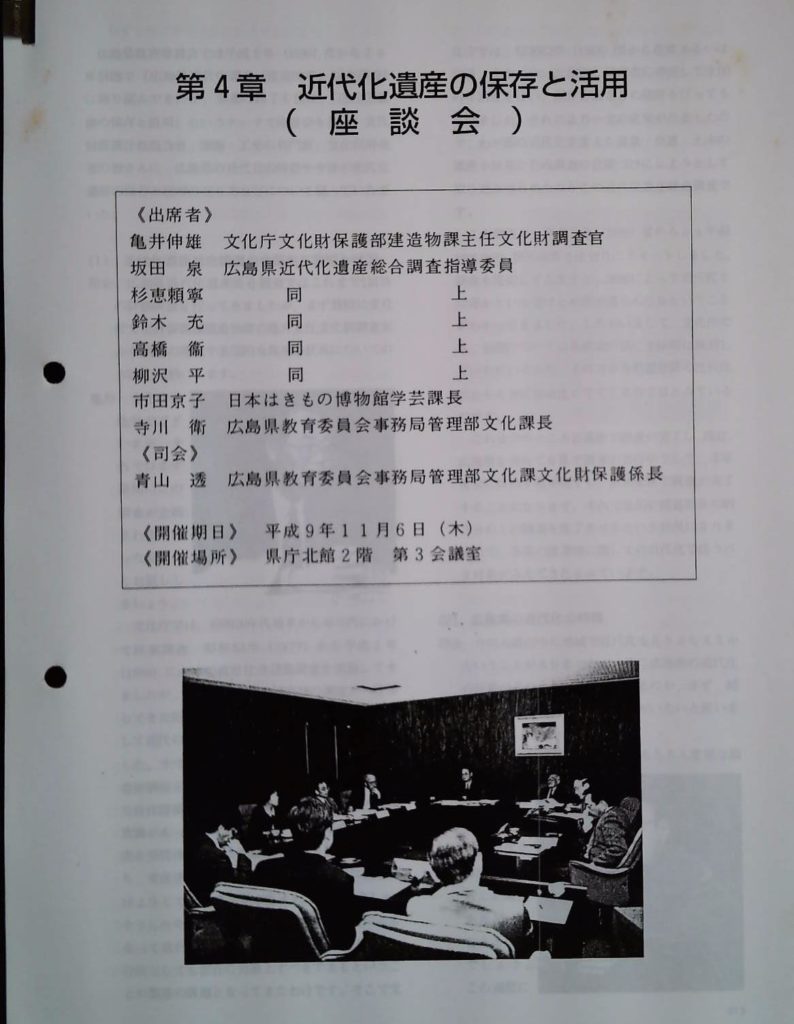 |
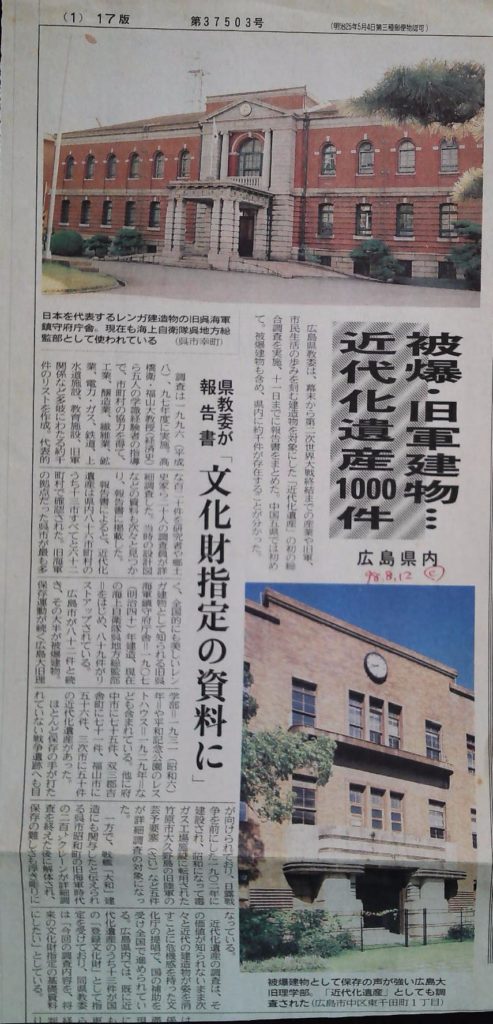 |
止
Struve Geodetic Arc – map of inscribed property<作業中>
| Struve Geodetic Arc – UNESCO World Heritage Centre | |
| (Belarus, Estonia, Finland, Latvia, Lithuania, Norway, Republic of Moldova, Russian Federation, Sweden, Ukraine) | |
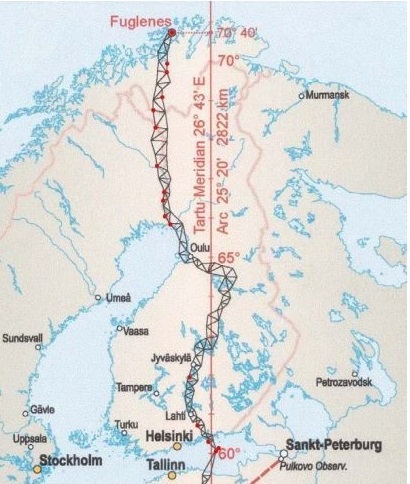 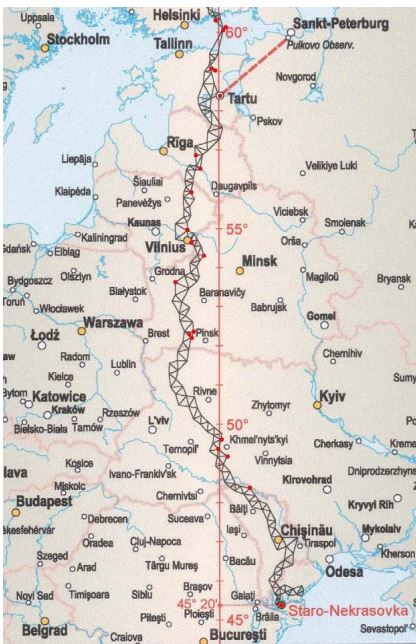 |
Norway, Sweden, Finland, Russian Federation, Estonia, Latvia, Lithuania, Belarus, Ukraine Republic of Moldova, |
over
Struve Geodetic Arc – UNESCO World Heritage Centre
Struve Geodetic Ar<作業中>
he Struve Arc is a chain of survey triangulations stretching from Hammerfest in Norway to the Black Sea, through 10 countries and over 2,820 km. These are points of a survey, carried out between 1816 and 1855 by the astronomer Friedrich Georg Wilhelm Struve, which represented the first accurate measuring of a long segment of a meridian. This helped to establish the exact size and shape of the planet and marked an important step in the development of earth sciences and topographic mapping. It is an extraordinary example of scientific collaboration among scientists from different countries, and of collaboration between monarchs for a scientific cause. The original arc consisted of 258 main triangles with 265 main station points. The listed site includes 34 of the original station points, with different markings, i.e. a drilled hole in rock, iron cross, cairns, or built obelisks.
Brief synthesis
The determination of the size and shape of the world was one of the most important problems of natural philosophy since at least the 4th century B.C. The development, in the 16th century, of a measurement system called “triangulation” improved the ability to determine the size and shape of the world. In this system, long chains of triangles were measured, creating arcs that stretched along hundreds and thousands of kilometres.
The Struve Geodetic Arc is a chain of survey triangulations stretching from Hammerfest in Norway to the Black Sea, through ten countries and over 2,820 km. These are points of a survey, carried out between 1816 and 1855 by several scientists (surveyors) under leadership of the astronomer Friedrich Georg Wilhelm Struve, which represented the first accurate measuring of a long segment of a meridian. This helped to establish the exact size and shape of our planet and marked an important step in the development of earth sciences and topographic mapping. It is an extraordinary example of the development of sciences and of collaboration among scientists from different countries, as well as monarchs, for a common scientific cause.
Prior to the Struve Geodetic Arc, an arc of about 2,400 km had been measured in India by Lambton and Everest (completed in 1845), and a shorter arc in Lithuania by Carl Tenner. Struve, who was working at the Dorpat University (currently University of Tartu in Estonia), decided that he would establish an arc following a line of longitude (meridian) passing through the observatory of the university. The new long arc, later to be known as the Struve Geodetic Arc, was eventually created by connecting earlier, shorter arcs to the southern one measured by Tenner, and their extension to the north and south. The arc thus covered a line connecting Fuglenæs, near Hammerfest at the Arctic Ocean, with Staro-Nekrassowka, near Ismail, on the Black Sea shores, along more than 2,800 km. The original arc consisted of 258 main triangles with 265 main station points. The inscribed property includes 34 of the original station points established by Struve and his colleagues between 1816 and 1851 – four points in Norway, four in Sweden, six in Finland, two in Russia, three in Estonia, two in Latvia, three in Lithuania, five in Belarus, one in Moldova and four in Ukraine. Other preserved sites of the Arc are protected nationally.
These marks take different forms: small holes drilled in rock surfaces, and sometimes filled with lead; cross-shaped engraved marks on rock surfaces; solid stone or brick with a marker inset; rock structures (cairns) with a central stone or brick marked by a drilled hole; individual bricks; as well as especially constructed ‘monuments’ to commemorate the point and the arc.
The Struve Geodetic Arc is an extraordinary example of the interchange of human values in the form of international scientific collaboration, as well as an outstanding example of a technological ensemble.
Criterion (ii): The first accurate measuring of a long segment of a meridian, helping in the establishment of the exact size and shape of the world exhibits an important step in the development of earth sciences. It is also an extraordinary example for interchange of human values in the form of scientific collaboration among scientists from different countries. It is at the same time an example for collaboration between monarchs of different powers, for a scientific cause.
Criterion (iv): The Struve Geodetic Arc is undoubtedly an outstanding example of a technological ensemble – presenting the triangulation points of the measuring of the meridian, being the non-movable and non-tangible part of the measuring technology.
Criterion (vi): The measuring of the arc and its results are directly associated with humans wondering about their world, its shape and size. It is linked with Sir Isaac Newton’s theory that the world is not an exact sphere.
Integrity
The inscribed property consists of 34 components, which in total comprise an area of 0.6 ha, with buffer zones amounting to a total of 11 ha. All components of the Struve Geodetic Arc are linked to one chain and a number of the Arc sites belong to national state geodetic reference networks that confer integrity even with the geodetic measurements processed today.
Authenticity
The inscribed components of the property have special characteristics and significance on a technological and scientific level. All points are maintained in their original location and changes are limited to some later constructions marking the locations.
Protection and management requirements
For the inscription of the Struve Geodetic Arc, the ten countries involved collaborated in locating and investigating the sites of historical measurements by using available geodetic observation data and by means of the recent measurement methods as well as satellite geodesy. Upon identification of the component parts, each State Party provided legal protection in accordance with its national frameworks, which in practice entails that some points are covered by laws protecting geodetic points and also by laws for the protection of cultural heritage.
At the national level, each State authority, usually the national mapping authority with the involvement of local administrative authorities, is responsible for the conservation and management of the Struve Geodetic Arc. At the international level, management is the responsibility of the Coordinating Committee, which meets every other year and is run according to management mechanisms agreed upon by all ten countries.
Based on the resolutions of the Coordinating Committee, national representative organizations actively promote the Struve Geodetic Arc via different tasks, such as the producing post stamps and envelopes (completed by Belarus, Estonia, Finland, Latvia, Lithuania, Moldova, Sweden, Ukraine); making promotional movies and educational leaflets, books and articles; preparing exhibitions; translating documentation; restoring geodetic instruments and other materials, and even minting commemorative coins for the Struve Geodetic Arc (Belarus, Moldova).
Ukraine: UNESCO statement 20220224<作成中>
UNPress release
ESCO’s statement on the recent developments in Ukraine
UNESCO is deeply concerned about the ongoing military operations and the escalation of violence in Ukraine. As stated by the UN Secretary-General, such operations are violations of the territorial integrity and sovereignty of Ukraine and are inconsistent with the Charter of the United Nations.
UNESCO calls for respect for international humanitarian law, notably the 1954 Hague Convention for the Protection of Cultural Property in the Event of Armed Conflict and its two (1954 and 1999) Protocols, to ensure the prevention of damage to cultural heritage in all its forms.
This also includes the obligations under the United Nations Security Council Resolution 2222 (2015) on the protection of journalists, media professionals and associated personnel in situations of conflict, to promote free, independent and impartial media as one of the essential foundations of a democratic society, and which can contribute to the protection of civilians.
UNESCO also calls for restraint from attacks on, or harm to, children, teachers, education personnel or schools, and for the right to education to be upheld.
over
Ukraine: UNESCO statement<作成中>
Following the adoption by the United Nations General Assembly of the Resolution on Aggression against Ukraine, and in light of the devastating escalation of violence, UNESCO is deeply concerned by developments in Ukraine and is working to assess damage across its spheres of competence (notably education, culture, heritage and information) and to implement emergency support actions.
The UNGA Resolution reaffirms the paramount importance of the UN Charter and commitment to the sovereignty, independence, unity, and territorial integrity of Ukraine within its internationally recognized borders, and it demands “that the Russian Federation immediately cease its use of force against Ukraine.”
The Director-General, Audrey Azoulay, fully concurs with the opening remarks made by the Secretary-General at the Special Session of the General Assembly, during which he said that “this escalating violence — which is resulting in civilian deaths, including children – is totally unacceptable.”
In addition, she calls for the “protection of Ukrainian cultural heritage, which bears witness to the country’s rich history, and includes its seven World Heritage sites – notably located in Lviv and Kyiv; the cities of Odessa and Kharkiv, members of the UNESCO Creative Cities Network; its national archives, some of which feature in the UNESCO Memory of the World Register; and its sites commemorating the tragedy of the Holocaust.”
“We must safeguard this cultural heritage, as a testimony of the past but also as a vector of peace for the future, which the international community has a duty to protect and preserve for future generations. It is also to protect the future that educational institutions must be considered sanctuaries.”
Consistent with its mandate, UNESCO demands the immediate cessation of attacks on civilian facilities, such as schools, universities, memorial sites, cultural and communication infrastructures, and deplores civilian casualties, including students, teachers, artists, scientists and journalists. These include women and children, girls especially, disproportionately impacted by the conflict and displacement.
In the field of education, Resolution 2601 adopted in 2021 by the UN Security Council states that UN Member States are to “prevent attacks and threats of attacks against schools and ensure the protection of schools and civilians connected with schools, including children and teachers during armed conflict as well as in post-conflict phases”. The General Assembly Resolution of 2 March expresses grave concern at reports of attacks on civilian facilities including schools. In this regard, UNESCO strongly condemns attacks against education facilities, with the damaging of at least seven institutions in the past week, including the attack on 2 March on Karazin Kharkiv National University.
The nationwide closure of schools and education facilities has affected the entire school-aged population — 6 million students between 3 and 17 years old, and more than 1.5 million enrolled in higher education institutions. The escalation of violence hampers the protective role of education, and the impact may be far-reaching including in neighbouring countries.
In the field of culture, UNESCO underlines the obligations of international humanitarian law, notably the 1954 Hague Convention for the Protection of Cultural Property in the Event of Armed Conflict and its two (1954 and 1999) Protocols, to refrain from inflicting damage to cultural property, and condemns all attacks and damage to cultural heritage in all its forms in Ukraine. UNESCO calls also for the full implementation of UN Security Council Resolution 2347.
In this respect, UNESCO is gravely concerned with the damages incurred by the city of Kharkiv, UNESCO Creative City for Music, and the historic centre of Chernihiv, on Ukraine’s World Heritage Tentative List. UNESCO deeply regrets reports of damage to the works of the celebrated Ukrainian artist, Maria Primachenko, with whose anniversary UNESCO was associated in 2009.
UNESCO condemns also the attack that affected the Babyn Yar Holocaust memorial, the site of one of the largest mass shootings of Jews during World War II, and calls for the respect of historic sites, whose value for education and remembrance is irreplaceable.
In order to prevent attacks, UNESCO, in close coordination with the Ukrainian authorities, is working to mark as quickly as possible key historic monuments and sites across Ukraine with the distinctive emblem of the 1954 Hague Convention, an internationally recognised signal for the protection of cultural heritage in the event of armed conflict. In addition, UNESCO has approached the Ukrainian authorities with a view to organising a meeting with museum directors across the country to help them respond to urgent needs for safeguarding museum collections and cultural property. In cooperation with UNITAR/UNOSAT, UNESCO will be monitoring the damages incurred by cultural sites through satellite imagery analysis.
In the field of access to information and freedom of expression, UNESCO recalls its previous statement underlining obligations under UN Security Council Resolution 2222 to protect media professionals and associated personnel. It further notes, as in the same resolution, “media equipment and installations constitute civilian objects, and in this respect shall not be the object of attack or of reprisals, unless they are military objectives”.
In this respect, UNESCO is deeply concerned about reports of the targeting of media infrastructure, including the shelling of Kyiv’s main television tower on 1 March 2022, with multiple reported fatalities, including at least one media worker, as well as cases of violence against journalists and attempts to restrict access to the Internet.
In a conflict situation, free and independent media are critical for ensuring civilians have access to potentially life-saving information and debunking disinformation and rumours.
At the request of a group of Member States, the UNESCO Executive Board will hold a Special Session on 15 March “to examine the impact and consequences of the current situation in Ukraine in all aspects of UNESCO’s mandate”.
over
ウクライナの世界遺産<作業中>
| No. | 登録年 | 遺産名 | 種別 | 備考 |
| 1 | 1990 | キエフ-ペチェールスカヤ大修道院 | 文化遺産 / (i)(ii)(iii)(iv) | |
| 2 | 1998 | リヴィウ歴史地区(1998年) | 文化遺産 /(ii)(v) | |
| 3 | 2005 | シュトゥルーヴェの三角点アーチ観測地点群 | 文化遺産/(ii)(iv)(vi) | |
| 4 | 2007 | カルパチア山脈とヨーロッパ地域の古代及び原生ブナ林 | 自然遺産 / (ix) | |
| 2007、2011, 2017 | ||||
| 5 | 2011 | ブコヴィナ・ダルマティアの主教座施設 | 文化遺産 / (ii)(iii)(iv) | |
| 6 | 2013 | 古代都市「タウリカのヘルソネソス」とそのホーラ | 文化遺産 / (ii)(v) | |
| 7 | 2013 | ポーランド、ウクライナのカルパチア地方の木造教会 | 文化遺産 / (iii)(iv) | |
止
『京大闘争 京大神話の崩壊』(京大新聞社編・京大全共闘協力、三一書房、19690615)
| 頁 | ||
| 005 | 序 | |
| 1933年 京大事件 | ||
| 1943年 学徒出陣 | ||
| 1945年 敗戦―大学再建 | ||
| 1951年 天皇事件 | ||
| 1955年 大学自治の後退―第2次京大事件 | ||
| 1960年 安保闘争 | ||
| 111 | ||
| 1967年 10・8羽田闘争 | ||
| 山崎博昭「日記」 | ||
| 大江健三郎「山崎君の日記を読んで」(文芸春秋社「持続する志」より引用) | ||
| 1969年 | ||
| 120 | 第1部 京大闘争’69 | |
| 292 | 第2部 原点からの問いかけ | |
| 338 | 第3部 「京大の屍」をこえて | |
| 「大学問題をめぐって」ティーチイン(大学変革委員会 講師:高橋和巳) | ||
| 351 | 学生H:僕は4回生ですが、今現実的に卒業や大学院入試がせまっていて、どうしようか迷っています。現実の問題として入試中止といった事態も起こりかねない時に、先生や闘争を組んでいる諸君は一体どんな展望を持っているのか。卒業や入試をひかえた者のことも考えてほしい。 | |
| 406 | 京大闘争すくらっぷ | |
| 416 | 付表 京大闘争の日誌 | |
止